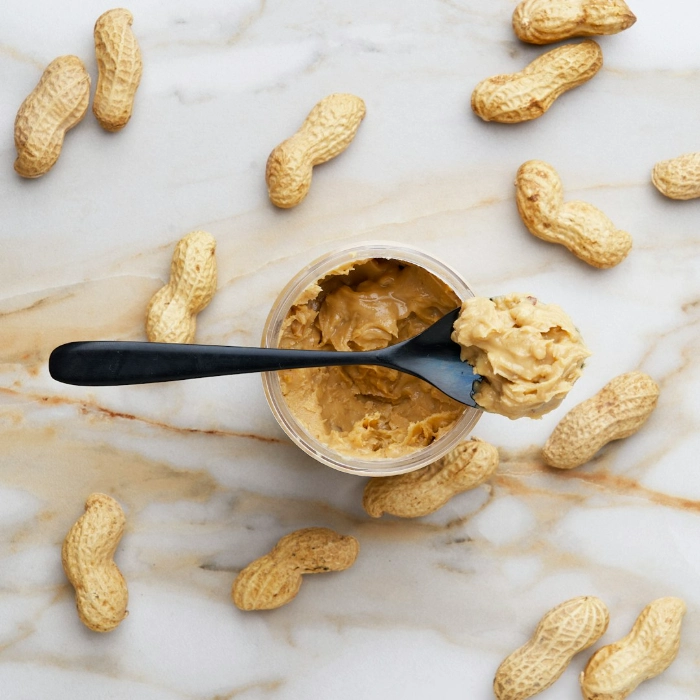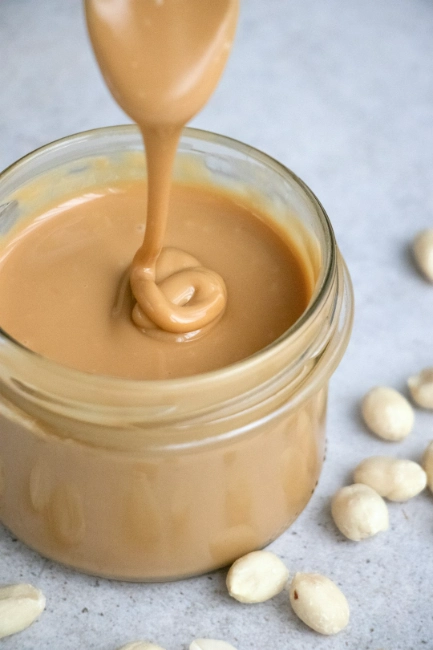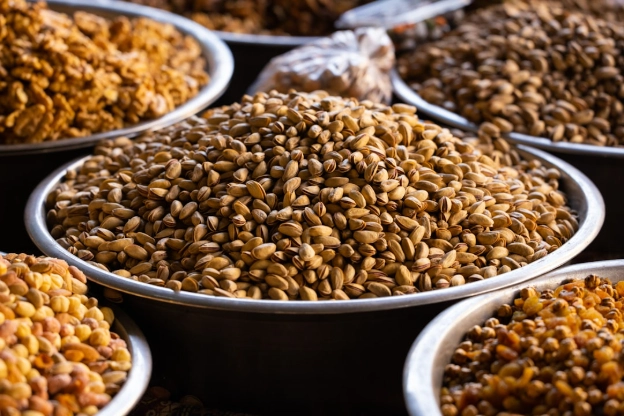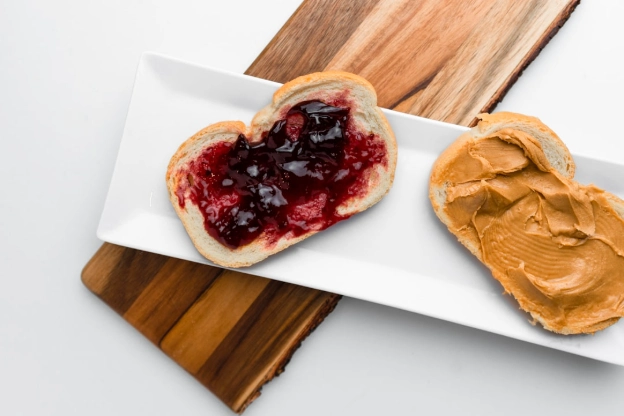Homemade Peanut Butter: Easy, Natural, and Surprisingly Delicious

-
Why Make Homemade Peanut Butter?
-
What You’ll Need
-
How to Make Peanut Butter
- Roast your peanuts
- Cool and blend
- Optional: Add oil
- Scrape and rest
- Transfer and store
-
Make It Your Own: Variations You’ll Love
-
How to Use It
-
Is It Really Healthy?
-
FAQ
- How long does homemade peanut butter last?
- Why does the oil separate?
- Can I use it for baking?
- Do I need to add oil?
- What kind of peanuts should I use?
-
Final Thoughts
-
You Might Also Like
There’s something deeply nostalgic about peanut butter. Whether it’s a peanut butter and jelly sandwich from your childhood or a rich cookie dough you stole a spoonful of while baking, that creamy, slightly salty, slightly sweet taste is universal comfort. But what if we told you that the best peanut butter you’ve ever had can come straight from your own kitchen - in just minutes?
Forget overpriced jars with palm oil and additives. Let’s make peanut butter that’s 100% yours: natural, healthy, easy.
Why Make Homemade Peanut Butter?
Most store-bought peanut butter brands are full of things you don’t need - sugar, stabilizers, hydrogenated oils. When you make it yourself, you control every ingredient, and the flavor is dramatically better.
Plus, it’s:
Healthy: rich in unsaturated fats and plant-based protein.
Customizable: creamy, crunchy, sweetened, unsweetened - you choose.
Affordable: no markup, no marketing, just good food.
Satisfying: you made it yourself. That always tastes better.
If you’re on a journey toward natural, unprocessed food, this is a great place to start.
So easy to make!
What You’ll Need
Peanuts – raw or blanched. Remove the skins for a smoother result.
(Optional) Neutral oil – like melted coconut oil, for extra creaminess.
A good blender or food processor – powerful enough to handle nuts.
A baking sheet – to roast the peanuts yourself.
Want to learn more about the roasting process? Check out our Roasting guide and dive into the Maillard Reaction that makes roasted peanuts so flavorful.
How to Make Peanut Butter
Roast your peanuts
Even if they’re already blanched, roasting is a must to deepen the flavor. Place them on a baking sheet, roast at 200 °C (392 °F) with fan for 8–12 minutes, shaking the pan occasionally. We want them golden brown.
Pick some good quality peanuts!
Cool and blend
Let the peanuts cool slightly, then add them to your blender or food processor. Start pulsing - at first it will look sandy, then clumpy, then suddenly smooth and shiny. That’s when you know the oils have been released.
The foodprocessor makes it for you!
Optional: Add oil
If your blender struggles, add a tablespoon of melted coconut oil or another healthy neutral-tasting oil to help things along.
Scrape and rest
Occasionally scrape down the sides, and give your machine a rest if needed. You want the final butter to be creamy and spreadable.
Transfer and store
Spoon into a clean jar. Keep refrigerated for freshness.
Pro tip: Homemade peanut butter can last up to 2–3 months in the fridge thanks to the natural oils acting as a barrier - but always check for smell or mold.
For more insights, read our Time-Saving Cooking Tricks, as well as these expert tips on storage (bhg.com, health.harvard.edu, Wikipedia).
Make It Your Own: Variations You’ll Love
Once you’ve mastered the classic version, why not have some fun? Homemade peanut butter is a perfect canvas for creative twists.
Here are a few easy add-ins to upgrade your spread:
Chocolate peanut butter – Add 1–2 teaspoons of unsweetened cocoa powder or melt in a few squares of dark chocolate at the end of blending.
Honey roasted – Blend in a teaspoon of honey for natural sweetness and a glossy finish.
Cinnamon spice – A pinch of cinnamon and a drop of vanilla extract make it cozy and warming - great on toast or in sponge cake cream.
Crunchy version – Set aside a spoonful of chopped roasted peanuts and stir them in at the end for texture.
Pro Tip: If you love experimenting, these variations are perfect to fold into cookies, layer into your sponge cake cream, or swirl through oatmeal for a satisfying breakfast.
How to Use It
Besides simply eating it by the spoonful? We’ve got ideas:
Breakfast toast or sourdough bagels – Try it on our Sourdough Bagels for a hearty start.
Filling or swirl – Add it to the filling of your Sourdough Cinnamon Rolls for a nutty twist.
Cookies! – Coming soon: our 3-ingredient peanut butter cookies that are flourless and gluten-free.
Layered into sponge cake cream – It makes a luxurious twist in a basic sponge cake cream layer.
What is your favourite way to eat peanut butter?
Is It Really Healthy?
Yes—when enjoyed in moderation. Peanuts are rich in monounsaturated fats, plant-based protein, and nutrients like magnesium, vitamin E, potassium, and fiber.
They’ve even been linked to better heart health, reduced risk of type 2 diabetes, and slower cognitive decline. For more information, check out this article on health.com.
Harvard experts note that peanut butter compares favorably to olive oil in terms of healthy fat ratios.
FAQ
How long does homemade peanut butter last?
Stored in a sealed jar in the fridge, it stays fresh for 2 to 3 months. At room temperature, try to use it within 2–3 weeks.
Why does the oil separate?
Because we’re not using emulsifiers. It’s totally natural - just stir it back together before use.
Can I use it for baking?
Absolutely! It’s perfect for cookies, energy balls, brownies, or even as a drizzle on cakes or ice cream.
Do I need to add oil?
Only if your blender needs help otherwise, the peanuts have enough natural oil to become creamy on their own.
What kind of peanuts should I use?
Blanched, unsalted peanuts work best. You can roast them yourself for maximum flavor.
Final Thoughts
Homemade peanut butter is one of those kitchen wins that makes you wonder why you ever bought it. It’s cheaper, healthier, and honestly just tastes better. Whether you’re spreading it on toast, baking with it, or eating it straight off the spoon - this one’s a keeper.
You Might Also Like
How to Make Sourdough Bagels: A Gut-Friendly Classic with a Chewy Twist
Sourdough Cinnamon Rolls: Soft, Sweet, and Naturally Fermented
How to Make Sponge Cake: A Simple and Fluffy Recipe
The Science Behind the Maillard Reaction: Unlocking the Secret of Browning and Flavor
-
Why Make Homemade Peanut Butter?
-
What You’ll Need
-
How to Make Peanut Butter
- Roast your peanuts
- Cool and blend
- Optional: Add oil
- Scrape and rest
- Transfer and store
-
Make It Your Own: Variations You’ll Love
-
How to Use It
-
Is It Really Healthy?
-
FAQ
- How long does homemade peanut butter last?
- Why does the oil separate?
- Can I use it for baking?
- Do I need to add oil?
- What kind of peanuts should I use?
-
Final Thoughts
-
You Might Also Like




